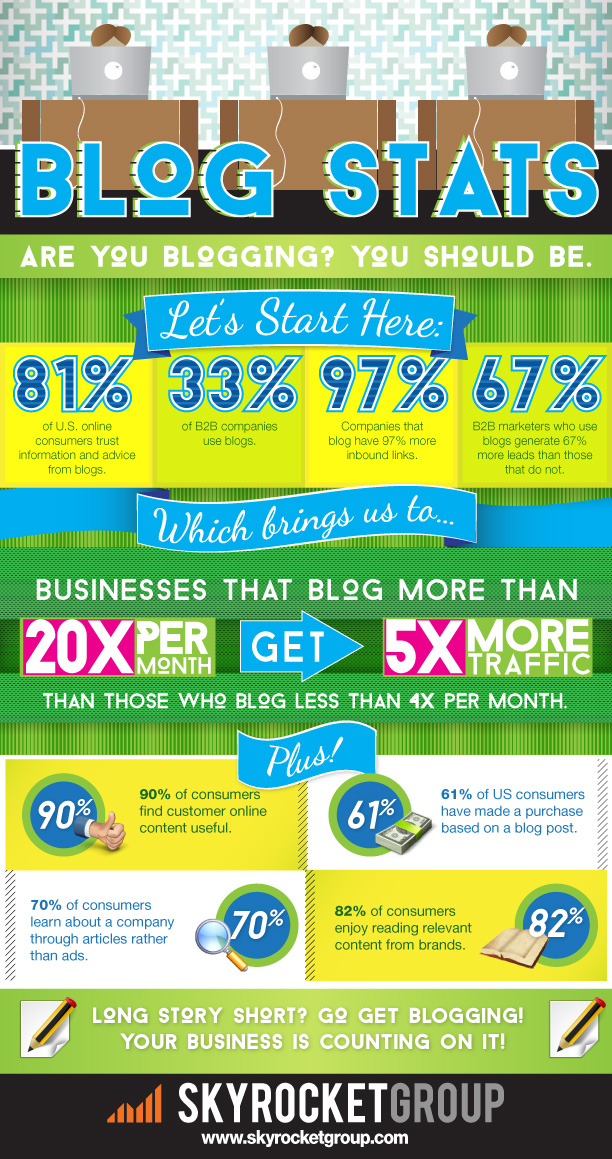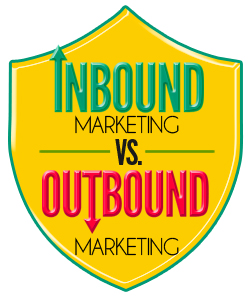
Infographic: Blogging Statistics
October 22, 2013
Marketing to Millennials: Why It’s Not Working and How To Fix That
October 24, 2013The first step in the transition is to change the way you think about marketing. Today, customers are in complete control of the marketing messages they receive and the channels through which they receive them. They prefer to come to you, rather than be chased. You must trust them to make up their own mind about your products or services.
 They can do so by downloading your white papers, eBooks and podcasts or reading blogs, infographics and social media posts. The key is that communication between inbound marketing companies and the modern customers is two-way, instead of intrusive. By seeking businesses that offer noncommittal content and desired communication, consumers’ days of feeling intruded by direct mail, telemarketing and unsolicited emails have come to an end.
They can do so by downloading your white papers, eBooks and podcasts or reading blogs, infographics and social media posts. The key is that communication between inbound marketing companies and the modern customers is two-way, instead of intrusive. By seeking businesses that offer noncommittal content and desired communication, consumers’ days of feeling intruded by direct mail, telemarketing and unsolicited emails have come to an end.
I’ll be honest. The transition from traditional outbound methods to inbound marketing could mean a complete overhaul of your current practices. However, as they say, the end justifies the means. So here are some basics about the switch that you will need to know before getting started:
Don’t be afraid to invest
It sounds scary, but trust me. Because of significant savings on cost per lead, you will be able to spend more on your campaigns. Don’t believe me?
- In HubSpot’s 2013 State of Inbound Marketing, 89 percent of marketers reported that they maintained or increased their inbound budgets this year. In fact, it was the third year in a row that businesses increased their inbound marketing budgets by a rate of nearly 50 percent.
- Nearly half of inbound marketers had higher budgets for 2013 than in 2012 because of an increase in overall budget allocation from positive return-on-investments.
- And they’re seeing results. Forty-one percent of CMOs and CEOs agreed that inbound marketing brought in the positive return-on-investment rates that they had sought out in the previous year.
Put content over keywords
You might have heard that inbound marketing methods rely heavily on keywords. Well, as per Google’s recent Hummingbird update, the search engine changed its SEO algorithm so that keyword information is no longer effective in optimizing content. For a while now, Google has been stressing the importance of creating quality content instead of abusing keywords to improve search engine ranking. Google believes this update will lead users to the answers they are actually looking for, rather than a website that simply contains the keywords they typed in. This means that to answer consumers’ questions and be granted priority from Google, you must leverage the inbound marketing methods we’ve mentioned: blogs, whitepapers, eBooks and social media.
Integrate e- and m-commerce methods
The transition to inbound allows for increased marketing capabilities through e-commerce (online sales) and m-commerce (mobile sales). Your website can attract new online leads using social media integration, interest-based emails, business blogging or brand-related apps. That way, consumers can not only learn about your products but also purchase them straight from their home computer, smartphone or tablet.
Another added function is the ability to measure the success of your online and mobile marketing efforts. These lead generation methods can be accomplished with intuitive inbound marketing software like HubSpot and analytics platforms like Google Analytics. You can learn more about your conversion rates, search engine rank, social media shares, email clicks and blog reach, as well as understand your return-on-investment and track customer activity.
SEO: Don’t sell yourself short
Today’s SEO practices may be different than you thought. First of all, the term “SEO” seems to be tied to poor practices because of the many marketers out there are doing it the wrong way – cheating the search system with keyword spam and link schemes. Also, to simply say that you offer SEO services would be selling yourself short, because SEO is so much more than it used to be. Instead, smart marketers are saying that they offer an arsenal of inbound marketing services.
Here’s why. Older, simpler SEO tactics like links and keywords worked when the ranking factors were things like link graph and keyword data. Now, the algorithm is made up of many more factors – usage data, brand signals, offline data, social graphs, etc. So to be successful in the new way of SEO, you have to optimize social media, emails, blogs and every other marketing channel. It’s become more of an all-encompassing, full-time job than a simple service. It will benefit you to advertise your services as such.
The good news is that stretching your SEO efforts to span all of these channels will help with your search rankings, too. Like with e- and m-commerce, driving traffic from social media, blogs and public relations efforts will eventually lead to valuable, measurable conversions.
It may sound like a lot of work at first, but the benefits are lasting and lucrative. Such is the spirit of inbound marketing!




